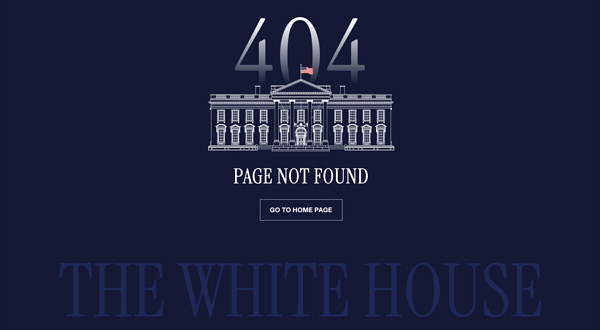

White House Office of Gun
Violence Prevention Goes Dark

(screenshot: whitehouse.gov/ogvp)
By Susanne Edward. Feb 6, 2025
Article Source
The Biden administration's White House Office of Gun Violence Prevention is no more—at least that is what it looks like.
The small staff of the office resigned in the days leading up to President Donald Trump's (R) inauguration, and within hours of President Trump taking office on January 20, 2025, the department was seemingly shut down, and its White House web page was taken offline.
While no official press release has been issued, the removal of the office's online presence is an encouraging sign the Trump administration has no interest in perpetuating the anti-gun office formerly overseen by none other than Kamala Harris.
It remains unclear at this early stage whether Trump will formally dissolve the office as a statement against Biden's approach, allow it to fade away, or redirect it to actually target firearm related crime as he reorganizes the White House to fit his vision.
The White House Office of Gun Violence Prevention was created in September 2023 by the Biden administration with the supposed mandate to "reduce gun violence and to implement and expand upon key executive and legislative actions taken to help save lives." It was responsible for developing a whole-of-government approach it claimed (without substantiation) to protect Americans from "gun violence" and played a key role in implementing the controversial Bipartisan Safer Communities Act, a law passed under Biden that was used—and misused—to put into place gun-control initiatives aimed at law-abiding citizens rather than those who commit crimes.
Despite these gambits, criminal violence escalated under the Biden administration. Violent-crime rates in major metropolitan areas surged, with cities like Chicago, Philadelphia and New York struggling with homicides and illegal firearm use.
The White House Office of Gun Violence Prevention never focused on the issues of criminal misuse of firearms. Instead, it had its fingerprints on such schemes as President Biden's ill-advised attack on funding for hunter-safety courses in public schools, which Congress blocked. It is also embroiled itself in a scandal over alleged collusion with Everytown for Gun Safety to pressure Glock to alter handgun designs. When the company refused to comply, the office reportedly coordinated with the City of Chicago to file a legally questionable lawsuit. These actions have triggered an investigation by the U.S. House of Representatives Oversight Committee. As this was going to print, the office, along with the Bureau of Alcohol, Tobacco, Firearms and Explosives (ATF), has yet to comply with subpoenas issued by House Oversight Committee Chairman James Comer (R-Ky.).
Indeed, the disappearance of the White House Office of Gun Violence Prevention is an encouragement for constitutional rights advocates who have long argued that gun-control measures pushed under the guise of "public health" or "gun violence prevention" unfairly target responsible gun owners instead of criminals. The office funneled resources into restrictive policies that aimed to limit access to firearms for all rather than address the underlying dynamics of violence.
While in operation, the office had a reported $430 million mandate, drawing funds from the federal budget. This allocation raised concerns among taxpayers and Second Amendment supporters who questioned how the money was being used. With the office shuttered or, at the very least, put on ice, the financial burden on taxpayers should be reduced, allowing resources to be redirected toward initiatives that combat crime. The focus can shift away from infringing on Second Amendment rights and toward actual solutions—such as enforcing existing laws, addressing how mental health issues relate to violent crimes and targeting the small population of predatory criminals disproportionately responsible for violence in their communities.
President Trump campaigned on the promise to "Make America Safe Again," and shutting down, or perhaps reimaging, the White House Office of Gun Violence Prevention would be a step in that direction.
![]()
























